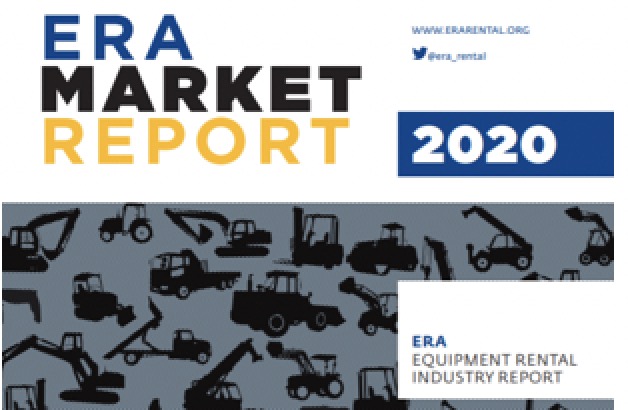 ERA's latest report |
The European Rental Association (ERA) has updated its
2020 Market Report, with new year-on-year estimates for rental activity, construction and GDP in each of the 15 countries covered.
Although the European equipment rental sector was severely impacted by the pandemic in 2020, companies were agile in adjusting their costs and adapting to the challenges. The overall impact of the pandemic in 2020, therefore, has proven to be less significant than expected in September last year.
Looking ahead, relative inertia in the construction sector and expected pro-cyclical policies from governments this year will result in a better-than-expected outlook for the equipment rental industry. The expectation is that any shock to private sector investments will be offset by more resilient segments, such as infrastructure and renovation.
Economic uncertainty and limited CAPEX investments are also likely to support rental contracts.
Michel Petitjean, secretary general of ERA, says: "The impact of the first wave of the pandemic varied significantly across the different parts of Europe and related directly to the responses of each country to the sanitary crisis, especially lockdown measures. Although the second part of the year saw a recovery in most countries, estimating the whole of 2020 was difficult. This update gives a much clearer picture of the impact of the pandemic on the rental industry and how it relates to both construction activity and government policies."
ERA estimated in June 2020 that the northern and central regions of Europe had been more resilient than the southern region and the UK, and this update shows that the gap between the different regions of Europe is actually larger than expected.
Northern Europe: Rental activity in Denmark (-2.3%) and Sweden (-2.2%) is now estimated to have been much stronger in 2020 because of a better performance from the construction sector (-0.7% in Denmark and -1.5% for Sweden). In Finland, a better assessment for rental activity in 2020 (-4%) is due to an improved estimate for GDP (-4.8%).
Western and Central Europe (excluding the UK): In this region, two countries performed better than expected. Due to a better performance from the construction sector, now estimated to have been -0.9%, the Netherlands shows rental activity falling by 2.3%. Similarly, rental activity in Germany is estimated at -3.1%, with construction activity now at +1.7%.
Southern Europe: There is little variation in the estimates of rental activity in Italy and Spain, with Italy showing an increase of 1 percentage point and Spain a decrease of 0.3 percentage points. France represents a special scenario as the only major rental market showing lower rental activity than previously estimated (-15% compared to the estimate of -14.3%). This is mainly due to construction activity being revised down. As a consequence of this large decrease in rental activity in 2020, this update gives France the strongest growth in 2021 at +9.5%.
UK: Considering the UK as a special case due to Brexit, the estimate for rental activity in 2020 shows an improvement, expected to fall by 14.8%.
The European construction sector is expected to recover slowly in 2021 following a collapse in 2020 caused by the pandemic. The recovery will, in part, be due to a mechanical base effect as well as resumption in activity. Consumption and trade are both expected to improve throughout 2021.